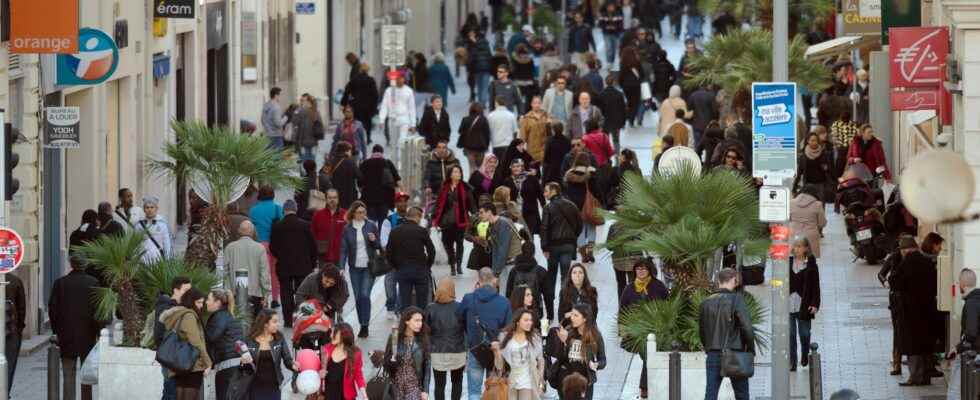All regions of France, except Provence-Alpes-Côte d’Azur, experienced a slowdown in their population over the period from 2014 to 2020, according to an INSEE study published this Thursday, December 29. Population growth was 0.3% over this period, equivalent to the population of the city of Rennes, compared to an increase of 0.5% between 2009 and 2014.
These figures are calculated by adding the natural balance (the difference between the number of births and the number of deaths over a year) and the migratory balance (the difference between the number of people who entered the territory and the number of people who came out).
The population stagnated in three regions – Hauts-de-France, Grand Est and Center Val de Loire – with a zero rate of change, and even fell slightly in Normandy and Bourgogne Franche-Comté. The only region where population growth is maintained is Provence‑Alpes‑Côte d’Azur. The higher births over the 2014-2020 period compensate for the number of departures. Despite the slowdown mentioned, some regions continue to attract more than others: Guyana (+ 2.1%), Corsica (+ 1%), Occitanie (0.7%), Pays de la Loire (0.6%), Brittany and Auvergne-Rhône-Alpe (0.5%).
Conversely, it is in Martinique and Guadeloupe where the population has fallen the most (respectively -1% and -0.7%). In Martinique, “many departures, mainly to mainland France, largely concern young people who are pursuing studies or looking for a job”. These are not offset by the natural excess. A phenomenon that is found in Guadeloupe, explains INSEE.
Fewer births and disappearance of the baby-boom generation
These declines in population growth can be explained by two factors, according to the institute: a greater number of deaths due to “the arrival at advanced ages of the large generations of baby boomers” coupled with the decline in births, and “population movements with foreign countries but also with other French regions”.
The National Institute of Statistics also notes that “the evolution of the population of the territories is different according to their degree of urbanization or rurality”. Between 2014 and 2020, “the population is increasing twice as fast in the urban area as a whole than in the rural area (+ 0.4% on average per year, against + 0.2%)”, develops the Insee.
This dynamic is however not due to a migration of populations towards the big cities, but rather to “a positive natural balance (+ 0.6% per year)”, which compensates for “negative migratory balances” – that is- i.e. a high number of departures. Conversely, in the countryside, the lower population growth is explained more by a higher number of deaths than births. On January 1, 2020, France had 67.16 million inhabitants (excluding Mayotte).
